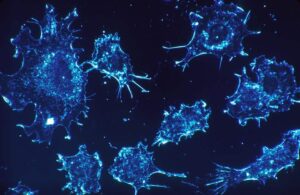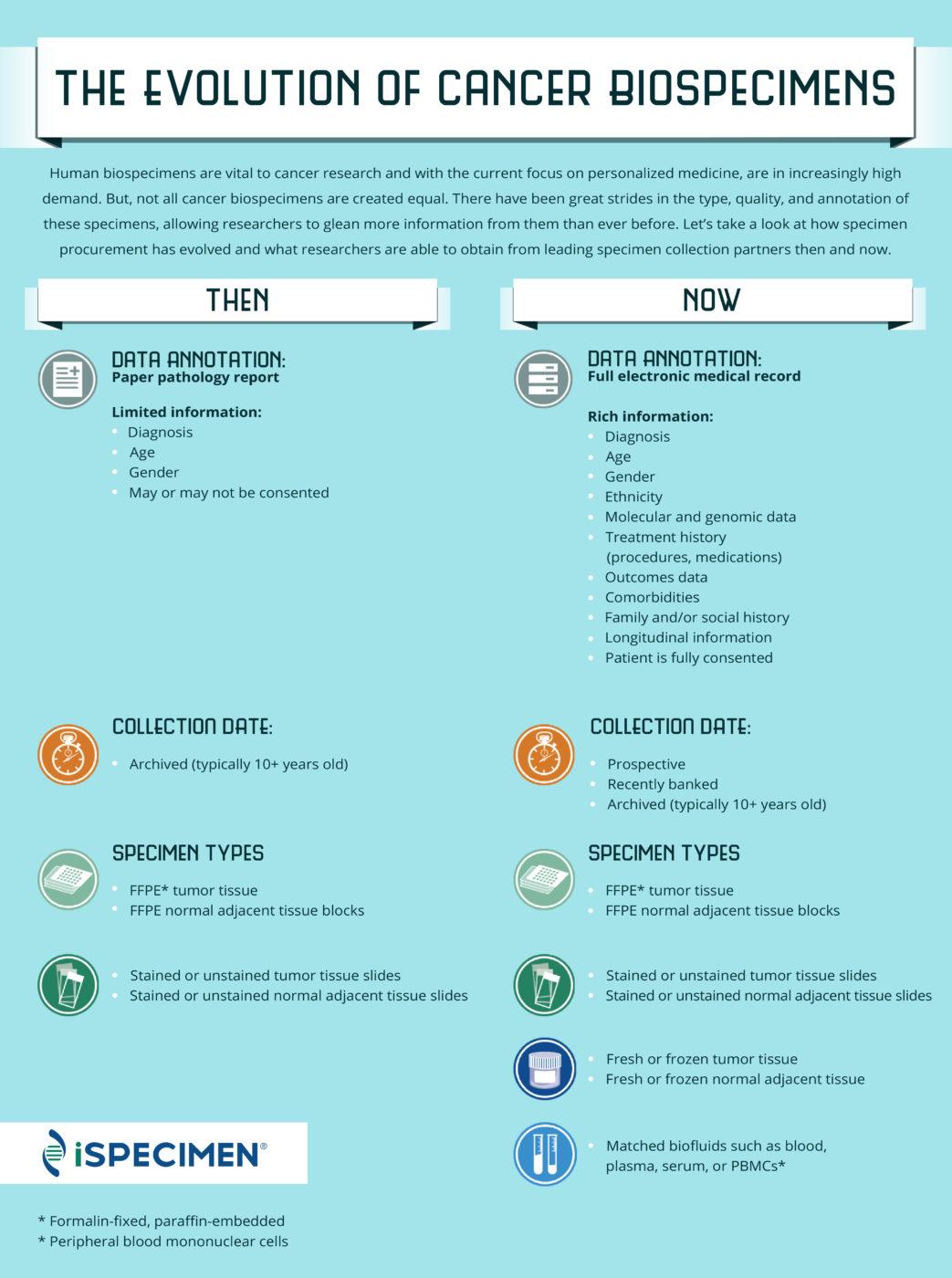
As the infographic below shows, biospecimens available today are far more diverse in terms of data annotation, format type, and collection date than ever before. As a result of advances in data capture and consolidation, improvements in storage, handling, and processing, and a wealth of new questions being asked as part of precision medicine initiatives, biospecimen procurement has had to keep up with ever-evolving research requests. Cancer scientists today have varying needs – they may need fresh tissue or archived tissue; They may need simple data such as specimen analyte and range, or may need more complex data, such as patient demographics, treatment history, or genomic information. More and more, they also look for matched sets of different tissue types, including biofluids, solid tissue, and cells from the same donor patients. Even details such as cell count may be specified in a cancer specimen request today.
The key word here is specified – a concept iSpecimen has taken to heart. As our previous two “Specimen Spotlights” show, iSpecimen is on the frontlines of procuring customized collections that meet the even the most detailed of requests, such as specimens from patients treated with checkpoint inhibitors and matched sets of bone marrow and peripheral blood mononuclear cells from patients with leukemia.
To further understand how far we’ve come, and what cancer researchers can request today, see the infographic below on the evolution of cancer biospecimens.
